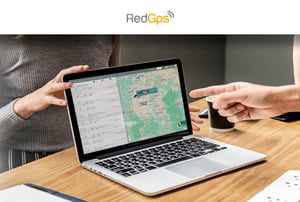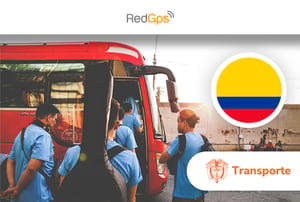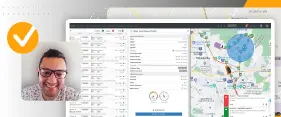One of the most important decisions leaders of GPS tracking and telemetry companies face is which platform to use a choice that often leads to switching tracking platform providers. Sometimes the migration is from another white-label platform or from an in-house development; in either case, it’s not a decision to be taken lightly, because it affects the company’s growth and directly impacts its customers and the stability of its service.
But even if it might seem that way, migrating doesn’t have to be a risky or difficult process. On the contrary, with the right tools, planning, and guidance, rather than posing a threat to businesses, it leads to improved service for their customers and becomes a crucial step in solidifying their position against the competition.
For this reason, we spoke with John Peña from Rastrelital Colombia to share his experience making the decision to migrate to RedGPS. With this interview, we hope to provide invaluable insight in case your company finds itself in a similar situation.
Table of Contents
1. Why do GPS tracking companies migrate platforms?
2. Risks, Fears, and Considerations When Migrating
3. When Migration Becomes a Critical Factor
4. What’s the Migration Process Like?
5. How Can You Ensure Your Clients Perceive Migration Positively?
6. What Was the Outcome of the Migration?
7. Key Learnings from This Case
Why do GPS tracking companies migrate platforms?
A good starting point is to understand what motivates companies to migrate their GPS tracking platform. John shared with us, “Customers were requesting features that other companies offered, which we didn’t have and we realized we were very limited.”
This is one of the main reasons behind a migration and a very serious matter—because if customers perceive this limitation in your services, it’s only a matter of time before they leave. That’s why our current Partners were looking for a platform that, in addition to helping them gain market share, would also allow them to offer more to their customers.
To some extent, it’s natural to start out with a low-cost platform or basic services, but if you want to build a strong, competitive business, sooner or later your customers will notice you don’t have the tools they need.
For this reason, it’s essential to thoroughly analyze any platform you’re considering migrating to. In John and RedGPS’s case, “customer service, the ongoing developments, and the results we’ve observed in other countries” were what led them to their final decision.
Risks, Fears, and Considerations When Migrating
Of course, contemplating a migration creates uncertainty because it can be a process with many risks that companies seek to avoid. However, if it is well planned, it is not a complicated process that puts your business at risk (to help you plan a migration and minimize any risks that may arise, we recommend reading this guide).
John told us that, on his part, “there was no fear because of the confidence transmitted by the RedGPS team; they are very confident in what they do and very precise.” That’s why it’s so important to always have real human support—people who are with you every step of the migration, ready to respond to any situation that might arise.
That’s the importance and impact of migrating to the right platform. John told us that they felt “a great sense of certainty and happiness because we’re finally going to have services we’ve wanted for a long time but hadn’t been able to find with the previous platform.”
The moment migration becomes a critical factor
Both Rastrelital and other clients we spoke to shared a serious situation they faced: if they didn’t migrate, they risked losing customers because, ultimately, they were less competitive compared to the competition.
Naturally, the fear for many GPS tracking companies is that their clients will resent the migration or be dissatisfied. However, with the right approach and solid planning, rather than generating insecurity and fear, the migration became a positive experience for their customers and for them as telematics service providers.
What’s the migration process like?
The migration process is fundamental; a process that is complicated or problematic can lead to service interruptions for end customers, which causes alarm and dissatisfaction, in addition to being a critical security vulnerability.
For this reason, Rastrelital needed to ensure that their clients were never left without coverage. They had to consider which devices would be migrated and the logistics for those requiring physical intervention.
Many of our current clients reported encountering platforms where the migration process itself was complicated. When combined with a lack of support and customer service, this created a lot of distrust. That’s why John mentions, “The migration structure that RedGPS has is tremendous; I didn’t know it could be done so simply and easily. On top of that, the team is always present we never felt a lack of customer service or support, something that has happened with other companies.”
These are exactly the factors that anyone considering a platform migration needs to pay attention to, as there are many variables that can turn the migration process into either a nightmare or a step forward.

Things like bulk sending SMS commands within the platform or through apps like SMS Gateway, save a lot of time, since devices can be migrated in batches without having to handle them one by one, and this automation makes the process faster. The migration carried out by Rastrelital was so well executed that, as John noted, “during the migration, we even identified some errors on our own side.”
That’s why it’s so important for the migration process to be easy, fast, and automated, with support and assistance at every stage, as well as ongoing training.
How can you ensure your clients perceive a migration positively?
In John’s experience, telling a customer that you’re switching platforms can be perceived negatively. That’s why his advice is to frame the change as an upgrade; by doing this, the migration was “very well received because they now have better tools, such as the reporting system.”
“Customer perception was very good the apps were delivered on time, even ahead of schedule. We started handling the migration well in advance, preparing our customers with links to all the new features, and even had a video ready so they could see what was new on the platform, ensuring they were never caught off guard or left without service.”
At Rastrelital, they always approached migration as an improvement and made it clear they were upgrading for the benefit of their customers giving them better services and more tools. According to John, this was the main reason their clients were so receptive: they presented the change as “we’re giving you more,” so customers felt grateful and accepting.
““In the end, customers like new things. We never handled the change as ‘we have something wrong’—instead, we emphasized that we’re improving; we told them they’d receive extra services free of charge because the platform allowed us to build anticipation.”.
While customers needed training, they were never resistant; many end users were pleased because the new solutions allowed them to get more from their service, and cost was never a deciding factor or obstacle.
What was the outcome of the migration? Was the process worth it?
In John’s words, “The result of the migration was outstanding. Functions and tools like automated reports delivered first thing in the morning have our clients ‘thrilled’ (…). It’s a positive change that encourages clients to invest in sensors. Now we have great solutions to offer, increasing our clients’ portfolios.”
For this reason, migrating to the right platform represents new opportunities and helps business growth. In Rastrelital’s experience, “with our existing clients we can increase revenue, for example with OnDelivery, which many current clients want to learn about and use the new solutions.”
When your clients say, “We want to hear about this because it’s what we need,” it’s the best sign that a migration was worthwhile. In conclusion, “the migration also created new business opportunities for our clients, since now they can offer more than ever before—something that would have been impossible before.”
One takeaway from this success story is that changes should happen at the right time. As John points out, the company was stable, but at a crucial point that would determine future growth. As he shares, “We made the change—and the outcome was completely positive.”
Lessons learned from this case
John shares a very valuable reflection for GPS tracking providers who are in that decision-making process: “It’s about telling people: take the risk; your customers will appreciate it, your employees will appreciate it. Let me tell you that we have some clients who ask us for reports that used to take our team up to three days to create; today RedGPS does it for free, which allows us to optimize costs. We’re being more effective and we can assign the team to other areas, focus more on customer service to strengthen the company.”
For this reason, it is so important for us to listen to all our Partners in their own language, sharing their culture, because more than providers, we are a partner they can trust, and together we support each other to achieve our goals.
“It’s about daring. It’s about weighing the pros and cons of the platforms. We at RedGPS didn’t see anything against it. There may be some development still missing, but we know they are willing to say, ‘All right, John, what do you need to make it happen?’ It’s about having the courage to step out of the comfort zone.”
“Many times you stick with a company because ‘we’ve been together for five years,’ but it isn’t giving me anything to grow. That is, I’m very fond of the previous company—I started with you—but I need to move forward.”
This success story shows the importance of choosing a white-label GPS tracking platform with a solid, reliable infrastructure—both in software and in human technical support. If you lead a telematics service provider, are looking to improve your customer service, and know you’ll need help with the migration process, contact us so we can provide all the support you need, from the first steps through post-migration. We’ll help your business continue to grow.
TYou may also be interested in


Is your GPS tracking platform robust and competitive? |

IoT and Public Transportation Insecurity in LATAM |

FUEC: Generate Your Form at No Cost from Our Platform |











